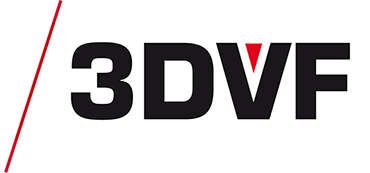Prévu pour la fin du mois de mai, The Foundry a annoncé avec un peu d’avance hier soir le lancement immédiat de son nouveau Modo 901. Malgré son actualité chargée avec l’annonce de son rachat par HgCapital, la RoadMap de développement s’en retrouve inchangée, d’autant que cette sortie était prévue depuis déjà quelques mois. Les utilisateurs enregistrés devraient recevoir les intructions de mise à jour à partir du 27 mai.
Son site officiel a totalement été mis à jour pour l’occasion, et voilà la liste de ses principales nouveautés (en anglais) :
(Si vous êtes utilisateurs de Modo, n’hésitez pas à partager vos impressions et vos tests avec cette nouvelle version)
Advanced viewport
Powered by The Foundry’s Clear technology, 901’s new hardware-accelerated viewport lets users manipulate geometry and materials in a real-time setting that accurately displays lighting and shadows, BRDF materials, reflections, gloss, screen-space ambient occlusion, high-quality transparency, anti-aliasing, supersampling and a number of 2D post-processing effects. This allows people to iterate faster in a high-fidelity context that closely reflects the final render.
Vector-based graphics support
901 offers new support for Scalable Vector Graphics (SVG) files, along with a new Curve Fill polygon type. Artists can use SVG artwork in their MODO scene as texture files, or as curves, which they can then manipulate in 3D, or use as a framework to construct meshes. Edited vector compositions can also be exported back out as SVG files for use downstream in the design or manufacturing process.
Accelerated performance
901 accelerates workflows across the board—including selecting, displaying and deleting many items, or changing their type—even on incredibly large scenes. This includes faster animation of deforming meshes, with new support for the OpenSubdiv library, as well as new sampling techniques improve rendering performance with many direct lights and light linking.
Extended dynamics and effects
901’s new dynamic and procedural effects include a new procedural Shatter item lets artists automatically shatter meshes based on collisions, while a procedural Rock item lets them add natural-looking landscape detail to theirs scenes. For rigid-body simulations, the ability to set up and control glue constraints is now much easier, while all dynamic simulations can now be saved and loaded as separate external cache files.
More flexible rigging
901 makes it easier to create cleaner, more flexible rigs for characters and other assets. New Command Regions lets users create clickable controls from any polygon selection and the controls only become visibly when mousing over the selected region, keeping the rig clean and unclutters. In addition, a new Tension texture lets artists drive values based on surface deformation.
Easier pipeline integration
Critical for today’s workflow, 901 ensures integration across multiple applications. 901’s new TD SDK offers an easier and more intuitive interface to the existing Python API for writing plug-ins. 901 also brings Qt support to Mac OS X and Windows—already available on Linux—so TDs can make cross-platform custom UIs. And, with support for OpenVDB voxel datasets, and a projection shader that enables digital matte painting workflows with The Foundry’s NUKE, 901 plays well with other applications in the pipeline.
Complexity management
901 helps manage today’s complex assets more easily. The new Deferred Mesh item lets artists offload assets to disk, loading them only at render time; simple proxies or bounding-boxes represent the item in the scene with minimal memory impact. Other complexity management features include the ability to mass-convert scene image clips to Tiled EXRs, and better ways to expose only selected inputs in assemblies.
Improved painting and texturing
901 delivers faster, higher quality painting, with better blending, interpolation, stroke evaluation, subpixel sampling and brush orientation during drawing among the improvements leading to a superior overall experience. In addition, a new option in the Parametric Ink tool lets artists use surface parameters to vary the opacity of the applied paint, while a new texture switch node and wireframe shader extend texturing possibilities.
Physically based materials and rendering
901 offers a new choice of BRDF material—GTR (Generalized-Trowbridge-Reitz)—that better matches specular highlights on real materials, and offers control over blurry reflections. The material is compatible with the new advanced viewport. In addition, MODO’s physically based Daylight model has been updated to provide a more realistic, physically accurate environment.
UI and viewport enhancements
901 lets users store and recall 3D viewport settings as presets and includes a switcher bar for easily selecting favorite layouts. In addition, artists can now choose to display UV edge seams and boundary edges with different colors in the 3D viewport.
Pour rappel, vous pouvez retrouver Modo 901 dans la boutique 3DVF.fr, et notez que pour en savoir plus sur son utilisation et son intégration dans votre pipeline de production, nous vous invitons à contacter directement notre partenaire Progiss, par téléphone au 01 49 89 07 90 ou par mail : info@progiss.com

